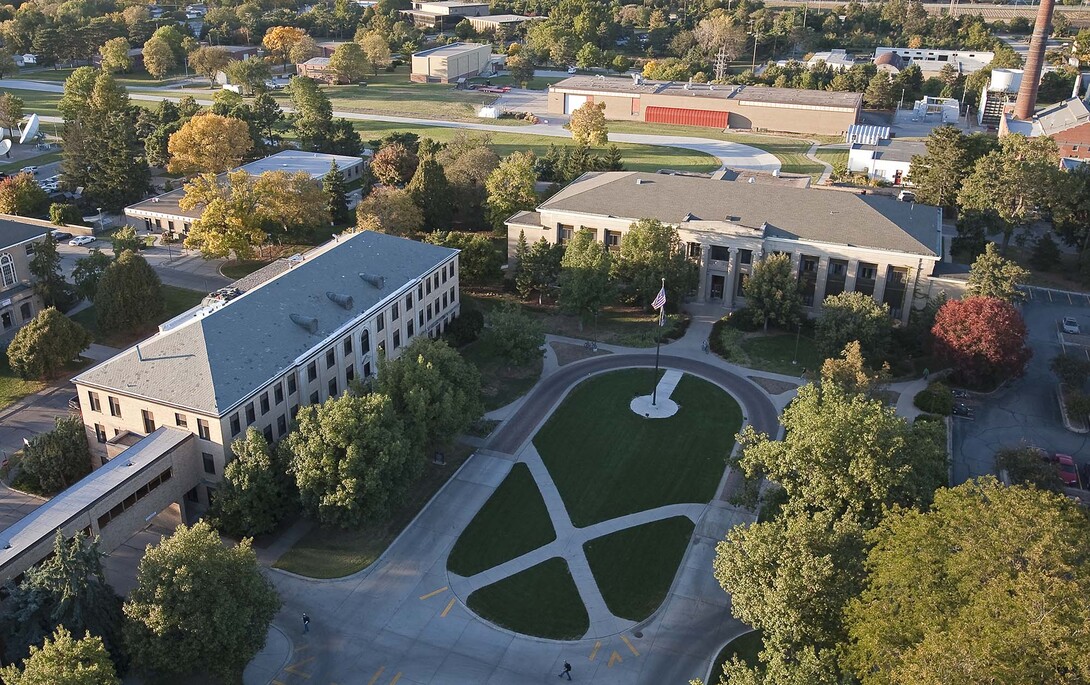
As the University of Nebraska–Lincoln moves forward with diversity planning, Nebraska Today is sitting down with college leaders to explore how inclusive excellence is being folded into day-to-day campus activities.
Since 2019, the university’s Office of Diversity and Inclusion has worked directly with institutional leaders in multiple ways, including through the Council of Inclusive Excellence and Diversity. Intended to connect colleges, primary campus units and ODI, the council is led by Nkenge Friday, assistant vice chancellor for strategic initiatives, with representation from across the institution.
The work of the council has been pivotal in guiding diversity, equity and inclusion plans university-wide. And, momentum realized through the council is being featured in this Q&A series.
Today, we’re continuing the series with the Institute of Agriculture and Natural Resources, talking with Richard Bischoff, IANR’s associate vice chancellor for faculty and academic leader success.
This question and answer series exploring campus diversity, equity and inclusion planning started prior to the State of Diversity address on Oct. 28 and continues into November. If your college, department or unit has a plan to feature, contact Troy Fedderson at tfedderson2@unl.edu or 402-472-8515.
What is the state of diversity, equity and inclusion planning in the Institute of Agriculture and Natural Resources?
We have a strategic framework that is guiding our diversity, equity, inclusion and belonging efforts.
The framework is operationalized by being intentional, reflective and accountable, and by matching our initiatives and activities to appropriately address issues of diversity, issues of equity, issues, of inclusion, and issues of belonging according to the readiness of change for the individuals and groups within the institute.
The framework is particularly useful because it helps us focus attention on individuals and areas where impact will be greatest; match efforts to where people are at; and recognize that with progress future efforts and initiatives will need to look different than current efforts and initiatives.
Are elements of the institute’s plan already being implemented?
Yes, very much so. We’ve started to integrate diversity, equity and inclusion activities into our search and hiring processes; faculty mentoring and evaluation; and training and programming offered to students, faculty and staff.
IANR also has expanded staffing for those who support inclusive excellence within the institute. That includes my position as the chief diversity officer for IANR. Each of our colleges and divisions have someone who is part of the leadership team who is formally responsible for coordinating DEIB efforts. Inclusive excellence is a stated expectation across the institute, for example, it has been written into job descriptions for all unit leaders hired since 2017.
We also conduct an annual diversity census, which helps shape and define ongoing discussions of culture and climate issues that impact inclusion and belonging. Additionally, our leadership directs a periodic audit of our physical facilities to ensure the way we use our space promotes inclusion and accessibility.
The institute works to develop partnerships and collaborates with other groups and individuals to impact our DEIB goals. Key efforts include serving on the university’s Council on Inclusive Excellence and Diversity; the vice chancellor for diversity and inclusion’s Diversity Engagement Team; and the University of Nebraska’s Diversity Officers Collaborative.
Our leadership is working with the Office of the Vice Chancellor for Diversity and Inclusion to coordinate programming and create a diversity and inclusion hub for students on East Campus.
More details on these programs and others are available on our DEIB website.
02354fe56fe99bc08d6ed1a57d631354.mp4Video: Diversity, equity and inclusion at IANR
Close Video: Diversity, equity and inclusion at IANRHow are individuals in the institute helping advance inclusive excellence?
The senior leaders of IANR are champions of DEIB initiatives and developing them within our framework.
We also have a group that advises the senior leaders on our DEIB efforts. This group of faculty, staff, students and administrators meets periodically with our senior leadership team as a group, and with individual deans about DEIB efforts.
There is someone from the leadership team of each of the colleges and divisions with responsibility for DEIB efforts within that unit. I meet with these individuals monthly to coordinate efforts.
Within IANR, each department has a committee or group responsible for championing DEIB programming and advising the head/director on these efforts. Each of the deans has a committee or group within their respective college/division to advise on these issues.
For annual evaluations, faculty members are required to indicate what they have done during the reporting year related to DEIB. Faculty members report on these contributions in their promotion and tenure dossier.
One of the goals within our framework is to expand the number of people intentionally engaged in nurturing an environment where every person and every interaction matters. We are doing this through intentionality, reflection and accountability.
Is there a part of the plan that is most exciting to you and/or having a positive impact on IANR?
Two of the most important indicators of success in the diversity and equity realms are who we hire and who we promote. We have been intentional in transforming our search practices to accentuate the value of diversity, emphasize an equity mindset, and encourage inclusion.
This is truly making a difference in raising awareness of best practices in search and hiring, and in our abilities to attract a deep and diverse applicant pool. We are intentionally applying many of these principles, as well as some that are unique, to faculty annual and promotion and tenure evaluation. This is leading to more intentional mentoring, especially of underrepresented faculty members and more equitable evaluation practices.
We are also now in a place where we are acknowledging, as part of faculty evaluation, the contributions that faculty members are making to DEIB. We are currently engaged in an evaluation of our policies and procedures for things that may encourage or reinforce inequities. I’m excited about that as well.







